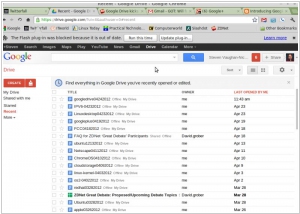Crashplan vs Google Drive
August 26, 2023 | Author: Michael Stromann
12
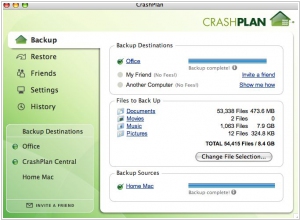
CrashPlan backup software offers the best way to back up and store personal, business and enterprise data securely - offsite, onsite and online in the Cloud. CrashPlan makes it easy to protect your digital life, so you can get back to what’s important in real life. Even when you step away, CrashPlan is busy at work protecting all your important files. Music, photos and documents are all automatically, continuously protected, so you can get back to whatever life throws your way.
Crashplan and Google Drive are two cloud storage and backup solutions, but they have different focuses and features.
Crashplan is primarily a backup solution that emphasizes data protection and recovery. It offers continuous and automatic backup of files and folders, including external drives and network storage. Crashplan provides versioning and encryption for enhanced security, allowing users to easily restore their files in case of data loss. It is well-suited for individuals and businesses looking for a comprehensive backup solution with robust features.
Google Drive, on the other hand, is a cloud storage and file synchronization platform that emphasizes collaboration and accessibility. While it offers basic backup functionality, its primary focus is on storing and sharing files across devices and with others. Google Drive integrates seamlessly with other Google services, providing users with features like document editing, real-time collaboration, and built-in productivity tools. It is widely used by individuals and teams for file sharing, collaboration, and easy access to files from any device.
See also: Top 10 Online Backup services
Crashplan is primarily a backup solution that emphasizes data protection and recovery. It offers continuous and automatic backup of files and folders, including external drives and network storage. Crashplan provides versioning and encryption for enhanced security, allowing users to easily restore their files in case of data loss. It is well-suited for individuals and businesses looking for a comprehensive backup solution with robust features.
Google Drive, on the other hand, is a cloud storage and file synchronization platform that emphasizes collaboration and accessibility. While it offers basic backup functionality, its primary focus is on storing and sharing files across devices and with others. Google Drive integrates seamlessly with other Google services, providing users with features like document editing, real-time collaboration, and built-in productivity tools. It is widely used by individuals and teams for file sharing, collaboration, and easy access to files from any device.
See also: Top 10 Online Backup services
Crashplan vs Google Drive in our news:
2022. Google is adding new Drive, Docs, Sheets, Slides and Keep optimizations for tablets
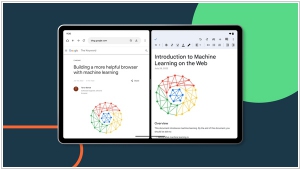
Google unveiled Android 12L earlier this year, aiming to enhance the usability of tablets. During the I/O conference, the company revealed its intention to optimize over 20 Google apps for larger screens. Today, Google has introduced several new features for Drive, Docs, Sheets, Slides, and Keep, taking a step towards fulfilling this commitment. The most noteworthy feature announced is the ability to effortlessly drag text or images between two Workspace apps that are open side-by-side. Google highlights that users can now drag content from apps like Chrome or Sheets and drop it directly into an existing document or spreadsheet cell. Additionally, in Google Drive, files can be swiftly uploaded by dragging and dropping them into the app. Furthermore, links to Drive files can be easily added by dragging the file into an open app like Keep.
2018. Google Drive added comments to Microsoft Office files
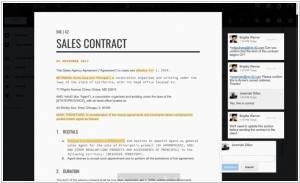
Google Drive has introduced a convenient solution for teams and agencies seeking to collaborate seamlessly using a combination of G Suite and Microsoft Office. Now, Google Drive users can easily add comments to Office files, PDFs, and images directly within the Drive preview pane. This eliminates the need to rely on external tools like Microsoft Office or Acrobat Reader, as well as the hassle of converting files to Google Docs, Sheets, or Slides formats. While it may not provide real-time commenting like G Suite or Office 365, this feature offers a significant improvement by eliminating the constant need to convert documents between Office and G Suite.
2017. Google launches Drive File Stream to replace the Google Drive desktop app for G Suite users
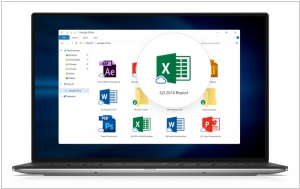
Google has introduced a new desktop application, called Drive File Stream, for Google Drive users who are subscribed to G Suite. This application will replace the existing Google Drive desktop app, which is scheduled to be discontinued next year. One notable distinction between the consumer and enterprise versions is the inclusion of administrative control features. Starting today, company IT departments will find the Drive File Stream settings within the Admin Console for their G Suite edition. This enables them to customize and deploy the solution within their domain, including options to enable synchronization, define installation preferences, disable automatic updates through Google Update, and manage other relevant configurations.
2017. CrashPlan shuts down its consumer cloud backup service to focus on business version
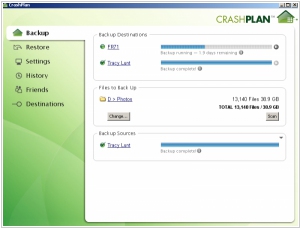
Popular cloud backup service CrashPlan has announced its decision to discontinue home subscriptions and shift its focus towards its business version, Code42. This move provides customers with a little over a year to find an alternative solution. Services like CrashPlan, Backblaze, and Carbonite have simplified the process of online backup, allowing users to subscribe and install a background app that automatically handles the backup process. CrashPlan has been a leading player in this market. However, the company has realized the potential for greater profitability by catering to larger enterprise customers. Hence, Code42 is providing ample time for its customers to transition away from CrashPlan, recognizing that uploading an entire hard drive can be a time-consuming process.
2017. Google Drive gets a new Backup & Sync desktop app
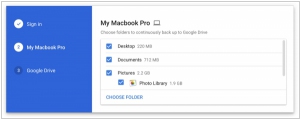
Google has unveiled its latest application, Backup and Sync, designed to facilitate the effortless backup of files and photos on both Mac and PC platforms. This utility serves as a replacement for the older Google Photos desktop app and the client applications of Google Drive. The newly introduced tool offers a user-friendly interface, where users can sign in to their Google account and select the folders they wish to continuously back up to Google Drive. Apart from backing up files stored on desktop computers, this software also allows users to back up photos from USB-connected devices like cameras and SD cards. As for business users, Google has plans to launch a dedicated enterprise solution called Drive File Stream, which will be made available to all G Suite users later this year.
2017. Google updated Drive with a focus on its business users
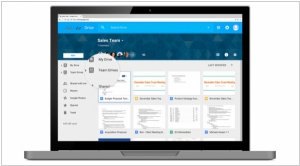
Google has implemented several updates to enhance its online file storage service, Google Drive, with a focus on improving its functionality for business and enterprise users. The primary emphasis is on providing a better service for teams within these organizations. As part of this effort, Google has made Team Drives available to all users after a preview phase that lasted approximately six months. Throughout the preview period, the team identified and addressed various issues, particularly related to permissions, to ensure a smooth general launch. Now, businesses of all sizes can leverage Team Drives for efficient file sharing within their enterprise. Another noteworthy addition is the general availability of Google Vault for Drive, which equips large enterprises, particularly those operating in regulated industries, with the necessary tools for archiving and data retention. This feature caters to the specific needs of these businesses, offering enhanced control and compliance capabilities. By prioritizing the requirements of business and enterprise users, Google Drive continues to evolve as a comprehensive and reliable file storage solution for organizations of all sizes.
2016. Google Drive gets intelligent search
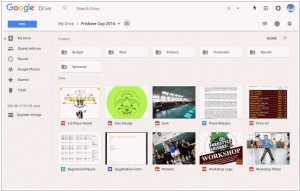
Google Drive is introducing an enhanced search capability that incorporates natural language processing and offers autocorrection suggestions for misspelled search terms. This means that when searching for documents, you can use phrases like "find my budget spreadsheet from last December" or "show me presentations from Anissa." As this feature is utilized more frequently, the search results will become increasingly precise. This development likely indicates that Google will soon integrate a voice interface into Google Drive as well.
2015. Code42 snares $85M for its Crashplan

Code42, the company behind the enterprise backup tool Crashplan, has announced a significant funding round of $85 million. Originally developed as a laptop backup solution, Crashplan transitioned to cater to the enterprise market and has been experiencing rapid growth, with a yearly increase of 100 percent, as stated by Payne, a representative of Code42. One of the key advantages of Crashplan is its user-friendly nature, often requiring minimal IT involvement once implemented. Automatic file backups are performed, and Payne asserts that end users can restore files themselves in the majority of cases. The tool is platform-agnostic, extending its backup capabilities to Macs and Linux machines, and it leverages cloud storage, enabling users to retrieve their files from anywhere, including new devices. It's important to distinguish backup from storage: while storage involves keeping data on a hard drive, backup serves as a contingency plan in case of data loss, allowing users to recover their files. Crashplan focuses on backing up laptops and mobile devices rather than the entire data center.
2014. Google Drive adds OpenDocument support, sending files as attachments
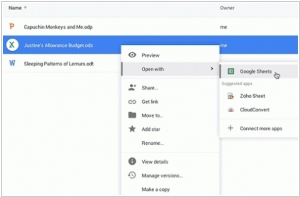
Google is introducing a series of updates for its cloud-based storage service, Google Drive. One notable enhancement is that Gmail users can now share Drive documents as attachments within email files. This feature proves beneficial when the recipient lacks permission to access the file on Google Drive or if you plan to delete the file from Drive in the future. Furthermore, Google has added support for importing the three major ODF (Open) file formats: .odt for documents, .ods for spreadsheets, and .odp for presentations. This addition simplifies the process of working with files from other open-source productivity suites like LibreOffice. Additionally, Android users of Drive can utilize voice commands within the Google search app to search for files. For example, a user can say, "OK, Google — search for holiday letter on Drive," streamlining the file search process.
2014. Google Drive for desktop now allows to launch files in preferred applications
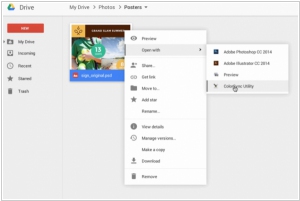
File storage service Google Drive has introduced a convenient feature that enables users to effortlessly launch their cloud-stored files with their preferred desktop applications. This functionality can be accessed through an optional Chrome extension. Once the extension is installed, users can simply right-click on applications stored in Google Drive and choose to open them using compatible applications installed on their computer. To utilize this feature, users must have the latest version of the Drive app installed on their Mac or PC, and their files should be synchronized to their computer. According to Google, the rollout of this new extension will take place gradually over the next few days.

